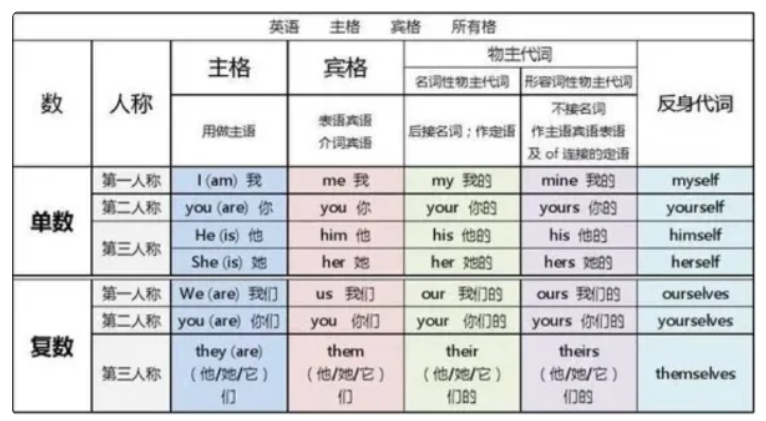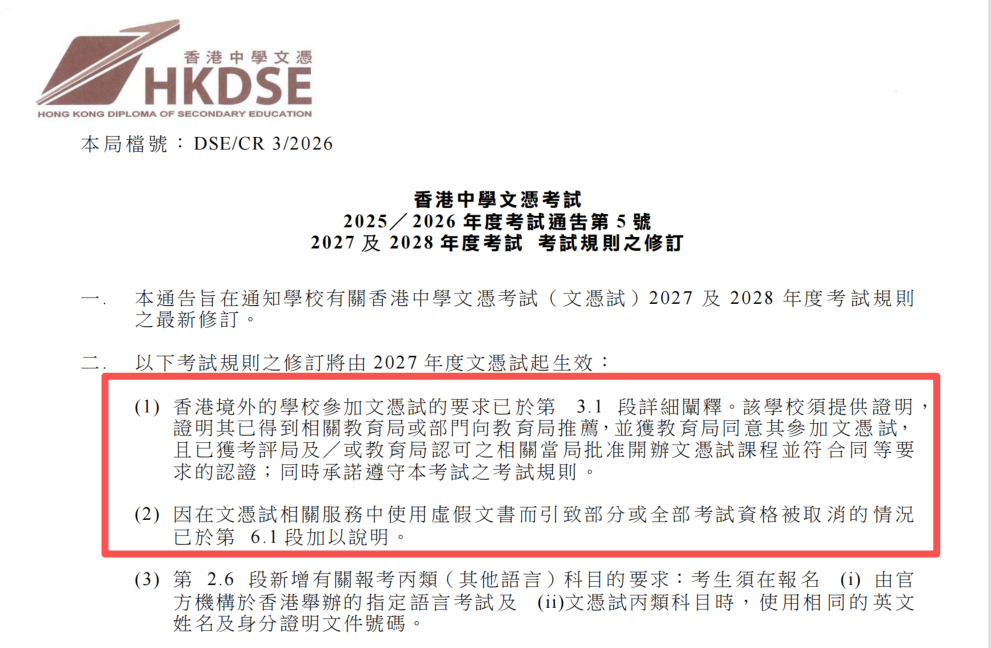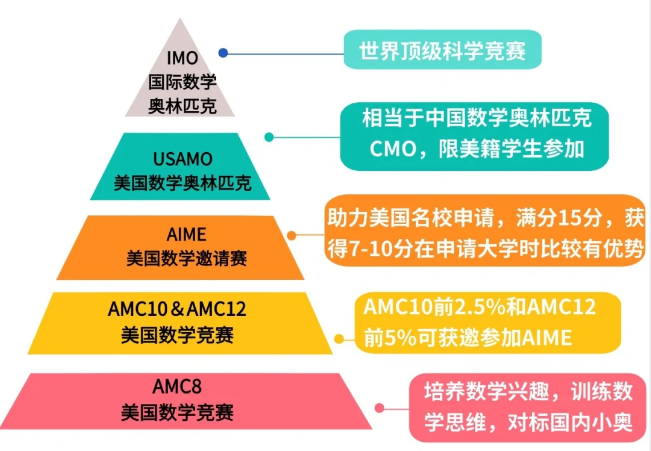SAT Writing and Language Test,这个部分着重考核学生的语法和文法知识,考察会在短文中进行。因此,考试更加注重语境,段与段之间的逻辑,从而需要学生掌握句子的结构和逻辑结构的发展。
今天,我们来总结一下SAT语法必考点,帮助同学们快速解题!
01、平行结构
标志词:
and / not only A but also B
both A and B / either A or B / neither A nor B
not A but B / rather than / prefer A to B
as well as the more A, the more B
平行结构解题三个步骤:
1. 识别平行标志词(注意平行标志词误用);
2. 形式功能一致(基本含义:词对词(且词性相同);词组对词组;句对句;注意如果是介词,只需是介词,而不需要同一个介词);
3. 如果形式对等,是否缺少平行连接词。
Tips: 1. 平行结构的指代: her - hers ; my - mine ; his - his2. 防止指代不明确
02、时态变化
| _ |
一般时 |
进行时 |
完成时 |
完成进行时 |
|
现在 |
do |
be+doing | have done | have been +doing |
| 过去 | did | be+doing | had done | had been +doing |
| 将来 | will + do | will be doing | will have +done | will have been doing |
| 过去将来 | would+do | would be doing | would have done | would have been doing |
总则:谓语动词被划线对应两个知识点:a. 主谓一致;b. 时态
时态对应:
since/for,主句(has/have done);
by now,主句(has/have done)或(does/do) ;
by the time+do,主句(will have done);
by the time+did,主句(had done);
by+将来时间点,主句(will do)或(will have done);
by+ 过去时间点,主句(was/were doing)或(did);
after+过去时,主句+did;after+do,主句+will do 或者do;
before +did,主句+had done或者did;before+ do,主句+will do;
解题技巧:
1. 寻找句子中有时间标志词;
2. 观察句子中其他谓语动词时态。
特有的时间标志词:
after / before; by; until; when / while / as; since / for; 以及具体时间点(如 next summer; in 1980)
03、虚拟语气
| 与事实相反 |
条件从句的
谓语形式 |
主语的谓语形式 |
|
表示现在情况 |
过去式(did)
(be 常用were) |
would / could / might / should +do |
| 表示过去情况 | 过去完成式
(had + done) |
would / could / might / should + have done |
| 表示将来情况 | 过去式(did)
should + do were to do |
would / could / might / should +do |
Tips:
1. 在虚拟条件从句中,动词“be”的过去时态一律用”were”,不用was。
2. 在虚拟条件状语中如果有were, should, had这三个词中任何一个,可省略if,把这三个词提到主语之前, 变成:were/should/had +主语+剩余成分。
3. 在虚拟条件状语从句中,省略连词的倒装形式的句首不能用动词的缩略形式。如我们可说Were I not to do., 而不能说Weren‘t I to do。
4. 在表示与将来事实相反的条件句中,只能用should,而不能用would,could和might 等。
5. 主句中的should通常用于第一人称,would,could以及might可以用于各种人称。
04、主谓一致
主谓一致原则:
1. 舍近求远:
标志词:of
标志结构:A of + B verb (verb 与 A保持一致)
常考量词:
1)谓语动词用单数:amount of; mass of; the number of
2) 谓语动词用复数:amounts of; masses of; a number of
2. 就近原则:
标志词:or; either...or ; neither...nor
标志结构:A or B + verb ; either A + or B verb;
Neither A nor B + verb(verb与B保持一致);
3. 复数原则:
标志词:and; both...and
标志结构:A and B; Both A and B (verb为复数)
4. 单数原则:
标志词:one of; either of; every
标志结构:( one of; either of; every ) + n. + verb
5. 修饰语忽略:
标志词:插入语,非谓语,从句,介词短语,形容词短语
技巧:修饰语忽略不看,谓语动词与s保持一致
05、代词

代词: 代词共五个考点:主宾格;单复数;指代错误;指代缺失;指代不一致。
1. 主宾格:I /me, he/him, she/her, they/them, we/us;
2. 单复数:it/they,its/theirs,that/those,this/these;
3. 指代不一致:one/one’s, you/your,we/our; 指代缺失:they,it(警惕it做形式主语/宾语);指代错误:两女名,一个she或者her;(偶尔)两个男名,一个he或者his
4. 指代缺失:it/its, they/their
5. 指代错误:
SVO, conj. Pron vo; Conj SVO, Pron vo; Conj pron vo, SVO
如上句子中,当S≠pron,代词错误。
改正方法:一是代词句意还原二SVO,(adv)doing。
代词最高频出现的考点:
1)one 只能指代第三人称单数, he or she;
2) it, this, that 不能指代句子;
3)which, that 不能指代句子;
4)反身代词不能单独作6主语。
06、比较
比较:
标志词:as...as; not as.../ so...as; more than; like / unlike;similar to
compared with / in comparison with; differ... from
比较解题的三个步骤:
1)识别比较标志词(注意标志词误用);
2)比较对象一致(往往是句子的主语);
3)比较倒装(由does/do; be动词;could/would;等情态动词构成);
4)比较省略(主要发生在as...as的第二个as后)。
07、标点符号
常见的标点符号有:逗号,分号,冒号,破折号
1. 逗号 ,
1) 逗号的作用 2)逗号的常见错误:
分割平行成分; sv , v
引导插入语; sv , o
引导直接引语; s , vo
引导并列结构(sv, 并列连词sv) s , sv
分割状语(状语从句)和主句 sv , and v
分割年月日
2. 分号 ;
分号“;”在SAT语法中出现和逗号“,”一模一样,都出现都不选。
sv ; sv
sv ; adv, sv
3. 冒号 :
出现冒号的选项,先看左边,冒号左边必须得有完整的句子,主从句都要完整,出现介词肯定错。
1)解释说明
2)接引语
冒号后可以加很多内容:
n. / doing / to do / that .../ SV
4. 破折号 —
注意:破折号的优先级比冒号要高
1)表示示例
2)概括前面列举的若干东西
3)用在一个引用的句子前面
4)用在一个解释性的插入语前面和后面,相当于一个括号
5)用在一个解释性的分句或句子前面
6)用来补充说明
08、不完整句
主要句子错误:
1)s,.......doing/done
2)s,....从句
3)s .....and vo
4)s1 doing/done.., s2vo (s1=s2 ×; s1≠s2 √)
5) s, ......,svo
6)从句(如although,since, while从句),连词(如but,and)svo
7) By doing sth. vo
解题步骤:简化句子的三种方法:
1.通过标点符号(如逗号)
2.从句标志词(that,which,when,where,who,as等),警惕没有从句标志词的从句(如果句子有独立的主语谓语而又没有被划线,即可忽略不看)
3.谓语动词(一个独立的谓语动词即是独立句子的标志)
不完整句判断:
1. 判断主句是否缺少成分(往往缺少谓语)或者从句是否缺少成分
2 . 选项识别时只关注缺少句子成分部分
可以做主语的句子成分:
名词,代词,动名词,名词性从句,以及to do is to do 这种特殊句型.
过去分词和动词过去式的区分:观察是否有by (有by 往往为过去分词;看词性为及物动词看意思;看选项对比(优选be done);看词性为及物动词,还是不及物动词(如果是及物动词后面必须有宾语,如果没有宾语则该词必然是动词过去分词.
09、流水句
主要句子错误:
1)Sv,sv
2)Sv,adv,sv
3)Sv;(或者句号)连词sv(或v)
4)Sv,v
解题步骤:
1.找标点符号(主要是逗号和分号)
2.判断逗号或分号前后句是否是完整句
10、从句
从句的分类:
名词性从句:主语从句,宾语从句,表语从句,同位语从句。
定语从句:由关系词引导的从句,通常用于充当句子的定语成分。
状语从句:时间状语,条件状语,让步状语,比较状语。
定语从句关系词
- 先行词,为人时,关系代词必须为who(做主语)/whom(做宾语);
- 为物时,关系代词为that/which;
- 先行词为时间时关系副词为when;
- 先行词为地点时关系副词为where;
- whose(表达所属,且不论物或者人)
定语从句先行词一般为就近单词
-
- 警惕svo 介词短语(做定语)+定语从句:
- 表语从句(be动词后的从句):不能由if引导,且目前已有的正确选项中because引导的表语从句从没被选。
- 关系代词在定语从句中作主语时,从句谓语动词的人称和数要和先行词保持一致。
11、简洁性
七个基本原则
1. 词语重复
2. 主动态优先于被动态 (不是所有被动都错误,不必要被动语态运用才是错误)
3. 代词不优选
4.being不优选
5. 动词>名词(如believe>belief;determine>determination)
6. 不必要从句
7. 优选句型 svo by doing ;S, ......, vo;svo, (adv) doing/done; svo doing或者s doing vo svo and vo或者svo and svo;句子短小凝炼
12、加删句子类题目
加删句子类题目 一定要分清楚 Sentence 和 Information 如果是 Sentence
1. 在段首,如果是观点句则保留,如果不是观点句则不加;
(观点句一般都带有 but / although / while / ; / —— / :)
2. 在段尾,则一般不加
(一旦判定不加,不加点理由为不相关)
3. 在段中,看情况,除了不相关之外,还有可能的原文重复,针对句中特别像观点句的句子。
4. 如果选项中有 contradict, undermine, diminish, inconsistent with则不选!
如果是 Information 一定要加,原因看上下文。
13、惯用语总结
介词惯用语(prepositional idioms)
About
anixous about
ask about
bring about
curious about
hear about
think about
talk about
worry about
Against
advise against
argue against
count against
decide against
defend against
go against
rebel against
As
celebrate as
regard as
see as
view as
At
aim at
arrive at
laugh at
look at
succeed at
By
accompanied by
amazed by
confused by
followed by
go by
impressed by
organized by
struck by
For
advocate for
ask for
blame for
famous for
known for
last for
meant for
named for
necessary for
pay for
ready for
responsible for
tolerance for
strive for
wait for
watch for
From
abstain from
different from
excuse from
far from
obvious from
protect from
Into
enter into
look into
inquire into
read into
In
engage in
fall in love
in A as in B
interested in
succeed in
take in
On
base on
draw on
focus on
impose on
insist on
move on
prey on
rely on
Over
argue over
rule over
talk over
think over
Of
approve of
capable of
certain of
characteristic of
combination of A and B
cure of
deprive of
die of
a fan of
in danger of
in the hope of
in recognition of
made up of
a model of
an offer of
on the border of
remind of
a selection of
a source of
suspicious of
take advantage of
an understanding of
a wealth of
To
able to
accustomed to
adapt to
adhere to
admit to
adjacent to
agree to
as opposed to
belong to
central to
come to
contribute to
devoted to
in addition to
in contrast to
listen to
object to
prefer A to B
partial to
reluctant to
reply to
see to
similar to
a threat to
try to (NOT try and)
unique to
With
agree with
bargain with
correlate with
familiar with
identify with
in keeping with
interfere with
sympathize with
trust with
后接动名词的动词
accuse of
admire for
allow
appreciate
capable of
complete
concentrate on
confess to
consider
delay
describe
discourage from
discuss
dislike
effective at
enjoy
escape
finish
forbid
imagine
insist on
permit
plan on
postpone
refrain from
report
resent
resume
stop
tolerate
后接不定式的动词
agree
attempt
choose
condescend
dare
decide
deserve
encourage
expect
fail
intend
love
mean
neglect
offer
plan
prepare
promise
refuse
scramble
seem
strive
swear
tend
threaten
want
以上便是我们为大家整理的SAT语法考点,希望能对同学们有所帮助!














